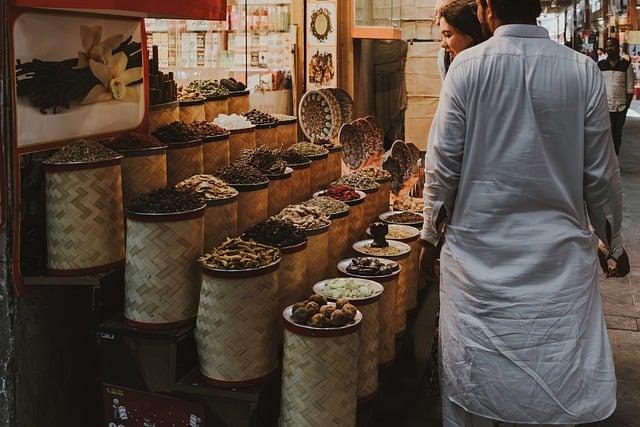In an increasingly connected world, cultural tourism has become a powerful force influencing local communities across the globe. Beyond just a leisure activity, it serves as a bridge between visitors and residents, offering unique opportunities for cultural exchange and economic growth. but how exactly does cultural tourism shape the everyday lives,traditions,and progress of these communities? in this article,we’ll explore the multifaceted impact of cultural tourism today—highlighting both the opportunities it creates and the challenges it presents for locals striving to maintain their identity in a rapidly changing environment.
Table of Contents
- The Economic Impact of Cultural Tourism on Local Businesses
- Preserving Heritage While Embracing Modernity
- Fostering Community Engagement Through Cultural Experiences
- strategies for Sustainable Cultural Tourism Development
- Wrapping Up
the Economic Impact of Cultural Tourism on Local Businesses
Local businesses experience a substantial boost thanks to the influx of cultural tourists who seek authentic experiences. From artisanal shops showcasing traditional crafts to family-owned restaurants offering regional cuisine, these enterprises benefit not only from increased sales but also from enhanced visibility. Seasonal festivals and heritage events often act as catalysts, attracting visitors eager to engage with the community’s unique identity, which in turn fuels demand for local products and services. This symbiotic relationship supports job creation, encourages entrepreneurship, and helps preserve cultural heritage by making it economically viable.
Moreover, cultural tourism stimulates the development of supporting industries that cater to visitor expectations. This includes accommodations, guided tours, transportation services, and cultural workshops, all contributing to a diversified and resilient local economy.
- Increased revenue streams for small and medium enterprises
- Investment opportunities in cultural preservation and infrastructure
- Community empowerment through sustainable tourism models
- Promotion of cultural exchange that enriches both visitors and residents
By expanding economic opportunities in these ways, cultural tourism helps communities thrive without sacrificing their unique traditions and social fabric.
Preserving Heritage While Embracing Modernity
Communities around the world are discovering innovative ways to honor their rich histories while integrating contemporary advancements. This balance creates vibrant spaces where traditional art, architecture, and customs coexist with modern amenities and technology.By doing so, locals not only protect their cultural identity but also attract tourists who seek authentic yet agreeable experiences. This delicate fusion often involves community-driven projects that encourage participation in preserving landmarks, promoting native crafts, and organizing events that celebrate heritage through a modern lens.
The benefits of this approach extend beyond cultural preservation. Thay foster economic growth, provide employment opportunities, and enhance social cohesion by reconnecting younger generations with their ancestral roots. Key strategies include:
- Adaptive reuse of historic buildings to serve current community needs.
- Collaborations between artisans and contemporary designers to create new cultural expressions.
- Educational programs that bridge traditional knowledge with digital platforms.
Such initiatives ensure that while communities embrace the future, the essence of their heritage remains alive and continues to inspire both residents and visitors alike.
Fostering community Engagement Through Cultural Experiences
immersing locals and visitors alike in shared cultural celebrations creates a powerful sense of belonging and pride. Cultural festivals, traditional workshops, and communal storytelling nights not only preserve heritage but also stimulate dialog across generations, fostering mutual respect and understanding. Through these vibrant experiences, communities build a network of collaboration that transcends simple tourism, turning each event into a catalyst for social cohesion and creative exchange.
Moreover, involving the community in the design and execution of cultural tourism initiatives ensures that the benefits are both meaningful and equitable. This can take many forms, such as:
- Local artisans showcasing their crafts in interactive markets
- Community-led guided tours highlighting untold stories and hidden gems
- Workshops teaching indigenous skills or culinary traditions
By positioning residents as active contributors rather than passive witnesses, cultural tourism becomes a vehicle for empowerment — strengthening local economies and enriching cultural landscapes with authenticity and pride.
Strategies for Sustainable Cultural Tourism development
Cultural tourism thrives when local heritage is preserved and shared thoughtfully. One effective approach is engaging community members as active stakeholders rather than passive observers. This means involving them in decision-making processes and encouraging them to showcase their traditions, crafts, and stories. Doing so not only enriches the visitor experience but also instills a sense of pride and ownership within the community. Additionally, fostering partnerships between local artisans, historians, and tourism operators can create sustainable economic opportunities while ensuring authenticity remains intact.
Another key strategy focuses on environmental and social duty, balancing tourism growth with resource conservation.Communities are urged to implement policies that promote low-impact travel and cultural sensitivity among tourists, such as:
- Developing educational programs highlighting local customs and natural habitats
- Setting visitor capacity limits to prevent overcrowding and degradation
- Encouraging the use of locally-sourced materials and eco-friendly accommodations
This holistic approach not only safeguards cultural assets for future generations but also builds a resilient tourism model that benefits everyone involved.
Wrapping Up
In exploring how cultural tourism shapes local communities today, it’s clear that this dynamic form of travel carries both opportunities and challenges. When thoughtfully managed, cultural tourism can invigorate local economies, preserve heritage, and foster meaningful exchanges between visitors and residents. At the same time, it calls for careful balancing to ensure that community identities remain authentic and sustainable for future generations. As travelers become more conscious of their impact, and communities continue to adapt, cultural tourism stands as a powerful catalyst for connection and growth in our ever-changing world.

